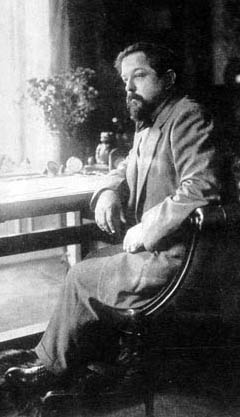Monday April 23, 2007
_______________________________________________________________

Claude Debussy
The Washington Post 4/23/07: With new string quartets proliferating faster than exit strategies for Iraq, maybe it makes sense to start programming more than one at a time. That’s what the Library of Congress did on Friday, bringing both the Euclid Quartet and the Degas Quartet to Coolidge Auditorium to showcase familiar works and a new octet by the young composer Armando Bayolo.
The Euclids opened the evening with Claude Debussy’s String Quartet in G minor – a work whose strange, elusive beauty that can leave you breathless. The Euclids played it with an elegant mix of passion, ferocity and feathery delicacy, yet their rather astringent sound kept it stubbornly earthbound – well played if not quite, um, Debussy-ish.
They ceded the stage to the Degas Quartet, for Felix Mendelssohn’s String Quartet in E Flat Major Op. 12. The dew was still fresh on Mendelssohn when (at 19) he wrote the piece, but you’d never know it – this is a spectacularly accomplished work, overflowing with wonders and various small miracles. The Degas got off to a rough start, making a soggy muddle of the first movement, but they recovered and turned in a solid if rather timid account of the rest. Cut them some slack, though: both violinists were recently replaced, and the new lineup hasn’t had a chance to gel yet.
Both groups took the stage for Bayolo’s “Ludi” (“Games”), which pits two string quartets against each other for musical games of love, trust and violence. It’s an ambitious work that references everything from mosh pits to Cage-ian indeterminacy, but it came across as resolutely academic, with little engaging sense of play at all – the “Mating Ritual” movement was so somber and sexless it could put you off romance forever. All was forgiven, though, in the beautiful “Benediction”, which tied the proceedings up with a radiant, ethereal bow.